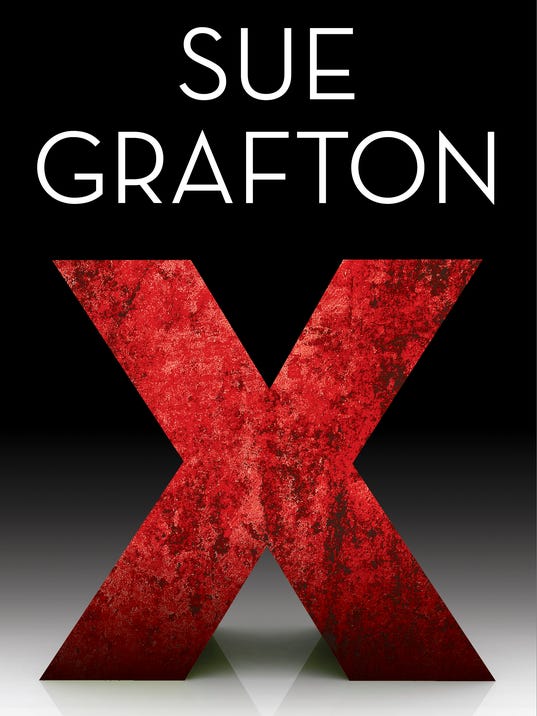I noticed that Amazon's Sue Grafton page offered a book of short stories, Kinsey and Me, and so I ordered it even though I prefer longer fiction. The first half of Kinsey and Me features Kinsey Millhone, solving cases lickety-split within the rigid confines of the short-story format. The second features a fictionalized Sue Grafton, coming of age in Kentucky as 'Kit Blue' (née Conway) and coming to terms with the transitions in her alcoholic parents' self-destructive lives. The 'Kit Blue' stories were written during the decade following her mother's death. 'Vanessa' "died of an overdose of sleeping pills after extensive surgery so that the cause of death was probably listed as Despair" (pp. 273-74).
Besides the two groups of stories, Grafton presents three excellent essays which, for me, establish her credentials as a writer of elegant nonfiction. There's a preface in two parts: first describing the important differences between the mystery novel and the mystery short story, and then laying down a rationale for the writing of the more personal second part of the book. Between the two parts, "An Eye for an I" traces Grafton's own development as a reader and writer of crime fiction, alongside a detailed analysis of the genre. Finally the introduction to the second group of stories delves into the relationship between Sue, Kit, and Kinsey, starting with their largely unsupervised childhoods, free to read Nancy Drew mysteries on hot summer nights.
No doubt I could go on forever comparing and contrasting the parts of Kinsey and Me, but I'll stop with a couple of observations about style. The second half is written at what your English teacher would have called 'a higher level of diction' than anything you'll ever see in a Kinsey Millhone novel or story. It's a treat to witness Grafton take flight onto this more abstract level, but it's also a treat to see her come back down to the straightforward level on which Kinsey moves. I think the difference in style and tone is based on the fact that Kinsey is always moving into the future whereas Kit is always moving into the past.
I loved all the stories and essays in Kinsey and Me, but they would not keep me occupied until Book 24 finally downloaded itself onto my Kindle. Again, what was I to read?
Anthony Trollope (1815-1882) rarely disappoints, and the Trollope group on Facebook was discussing his one-volume novel Miss Mackenzie in July and August. I read it quickly while waiting for the group to begin its discussion, and signed up to write summaries for the last three chapters (28, 29, and 30). BTW this was the first time I have been able to stay in sync with the group schedule, and I greatly enjoyed the leisurely second reading, enhanced by comments and background material from other readers. I shared some info on aspects of Victorian life -- mourning attire and dinner-party service à la russe, for example -- and am looking forward to the group's next project.
Just as I stepped away from the rarefied atmosphere of Miss Mackenzie, Sue Grafton's X appeared on the menu of my Kindle Paperwhite. There was no 'is for' clause in the title. Grafton takes up this issue in a USA Today interview:
I first thought of using 'X is for Xenophobe' or Xenophobia, which suggests a fear of foreigners, but alas, not one single foreigner materialized in the course of the writing," Grafton says. "There's a box of files with an X on the lid, a Father Xavier, a married couple whose last name is Xanakis, and a missing painting of a xebec which is a three-masted sailing vessel, but none of these seemed to encompass the whole. Finally, it occurred to me that since I was the one who invented this 'rule' about '…is for…' I was surely entitled to break it.Let's wait for another day to talk about reading X with the new insights afforded by Kinsey and Me.


2 comments:
You caught my attention at "...detailed analysis of the genre." Being a mystery/detective novel enthusiast I am actually interested in learning what is so attractive to me about the form. I'll dig into this. So thanks and bravo for bringing this blog arc home -- from A to X.
Thanks for the comment, 'anonymous.' Are you a fan of P.D. James? She has some wonderful comments about our genre in her memoir Time to Be in Earnest.
Post a Comment